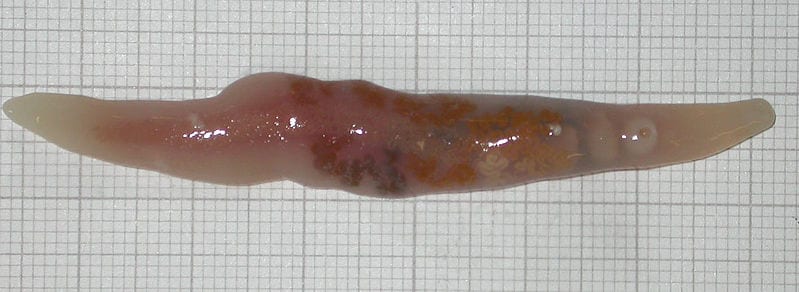From the Yoruba tradition of throwing cowrie shells, to the Roma fortune tellers peering at palms, people throughout history have wondered if there was some sort of physical or external way to map out the path of our lives. Modern day scientists are still pondering how to predict the future, but instead of looking up to the stars to tell our fortune, they're looking into our cells and at the structure of our DNA. I talked with Emily Bertucci, a Ph.D. student in the Odum School of Ecology, on her current work behind the science of aging.
“I'm really interested in how the epigenome might act as an interface between environmental factors and aging phenotypes, like declines in physiological function, cellular function, disease risks, and of course death, being the ultimate read-out of aging.â€
If the genome is like a play, then then the epigenome is the director, who indicates which parts of the scene or dialogue to emphasize and which pieces to cut out. DNA methylation, the process of proteins attaching chemical tags to DNA molecules, is a common way that eukaryotes regulate gene expression. In this metaphor, DNA methylation is like the stage directions written in key places to direct the action.
“It's hypothesized that if there is a double-stranded break in our DNA, important proteins leave their initial sites to go fix that problem.†Double-stranded breaks are an emergency situation. If these breaks are not repaired quickly or correctly, cell death or cancer could result.
“The DNA methylation is actually affected where those proteins were before. If the proteins don't make it back to that site, then chaos can ensue.â€
Just as the monster-movie Frankenstein is very different from Mary Shelley's original novel, the way our genes are expressed can drift away from their original dictation set by the proteins.
“What's interesting is that the loss of DNA methylation is predictable; it doesn't look like it's necessarily just a chaotic loss of information over time.â€
Additionally, environmental factors like smoking, pollution, or chronic stress, might be increasing the rate of changes in DNA methylation. These factors may cause someone's cells to look and behave older than they are.
“What I'm really interested in understanding is the origin of divergence between the chronological to this epigenetic, or biological, age, and what role the environment plays.†We don't know if the biological age acceleration is that the cells age two years for every one year chronologically, or if it's like one big jump where suddenly the cells have aged 10 years, and then proceed at a normal pace. “You can actually get kits now that measure your own genetic age. I've been dying to get one and figure out how old I am now, because I feel like I've aged 10 years since the last three years I've been in grad school!â€
Scientists are able to take a look at DNA methylation on your genome and predict chronological age within a couple of years range. Emily is working on an animal model that can be used to experimentally test different hypotheses about environmental factors that can change this rate of biological aging.
“Aging is such a weird thing, we don't actually know why we have to age. Feasibly we could be immortal.†Take the germ, or reproductive, cell line for example. “Every germ cell in a woman's body has been in existence ever since that initial progenitor cell. But the rest of your body's cells, the somatic cells, decline in function with time.â€
There are a number of different evolutionary hypotheses about why we age. One of the most compelling ideas ties into the selfish gene hypothesis. The selfish gene hypothesis states that prioritizing reproduction is all important, even at the cost of harming the parent organism. “If the average age of an animal before it's going to get eaten by a tiger is a year, there's no reason to preserve the somatic cells of the body to three years, because the animal's not going to get there.â€
In this scenario, it would be more important for that animal to prioritize reproduction to pass on its “selfish genes†rather than expending energy to maintain the animal's somatic cells for the long term. This lack of investment in the somatic self results in declining cell function and aging. Recent research is showing that stressful events start shifting the cell's priorities away from somatic maintenance sooner than they normally would. Thankfully, humans live well past their reproductive age. “I always joke with my Mom that I'm going to figure out if I'm the one who's turned your hair grey!â€
Although no one will ever be able to predict exactly how our lives will unfold, scientists like Emily Bertucci are getting closer to reading our genetic code and understanding how our pasts will affect our future.
About the Author
Megan Tomamichel is a PhD student in the Odum School of Ecology at the University of Georgia. She studies aquatic disease ecology and is working to understand the causes of deadly disease outbreaks that threaten the world's fisheries. Her favorite past times are aquarium building, hiking, drinking too much coffee and dreaming up names for future pets. You can reach her at Megan.Tomamichel@uga.edu
- Megan Tomamichelhttps://athensscienceobserver.com/author/megan-tomamichel/November 30, 2021
- Megan Tomamichelhttps://athensscienceobserver.com/author/megan-tomamichel/March 26, 2020
- Megan Tomamichelhttps://athensscienceobserver.com/author/megan-tomamichel/November 18, 2019
- Megan Tomamichelhttps://athensscienceobserver.com/author/megan-tomamichel/








